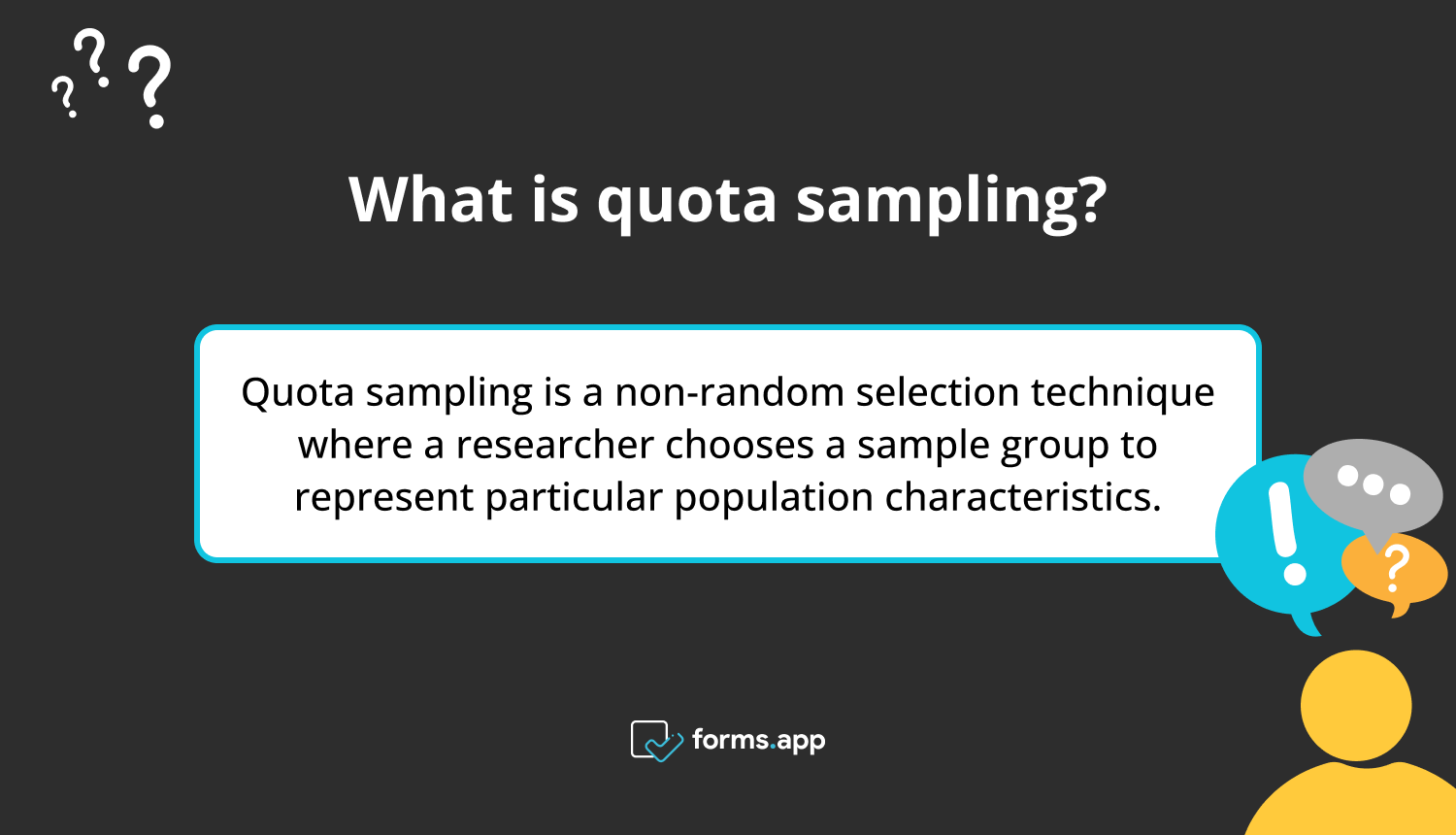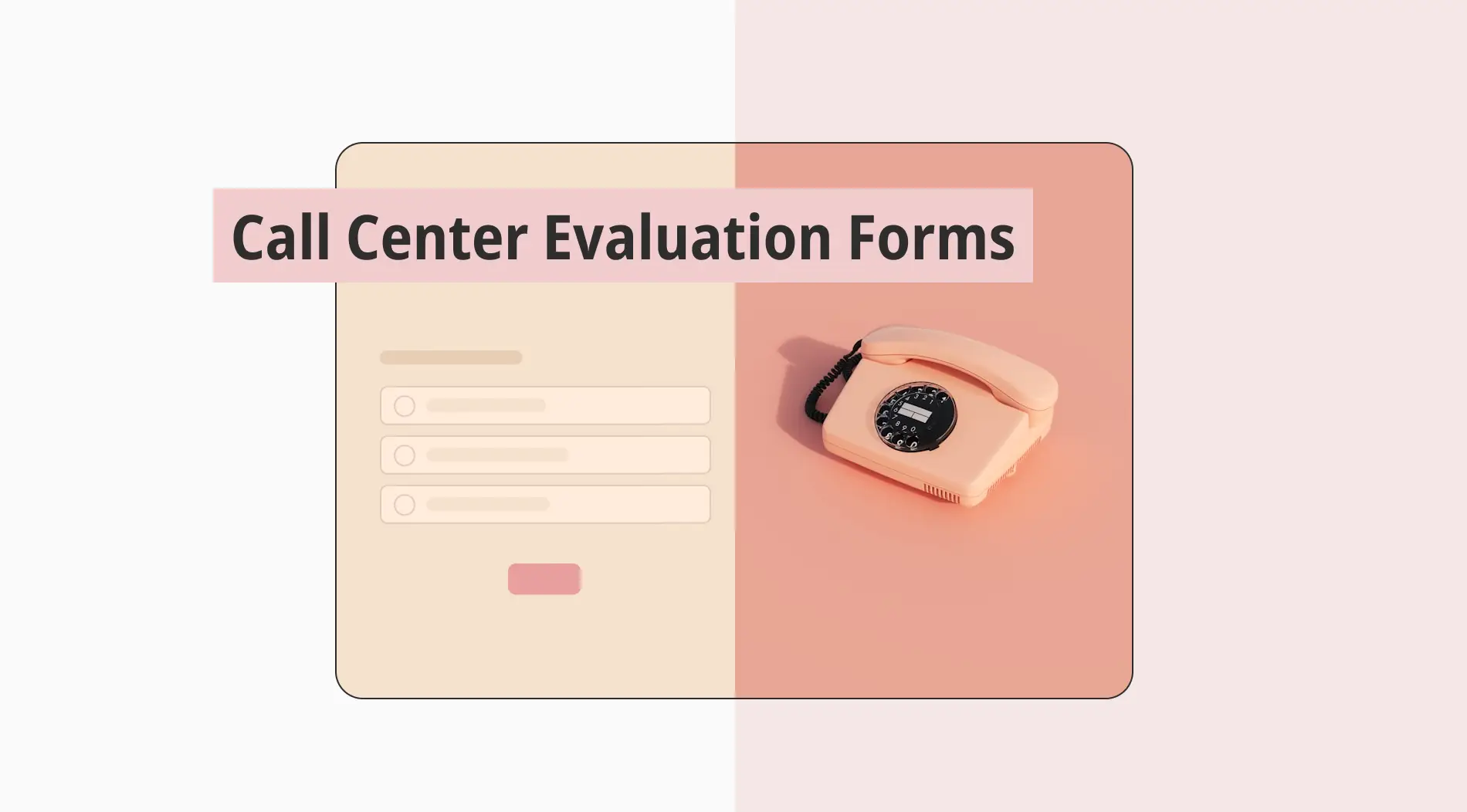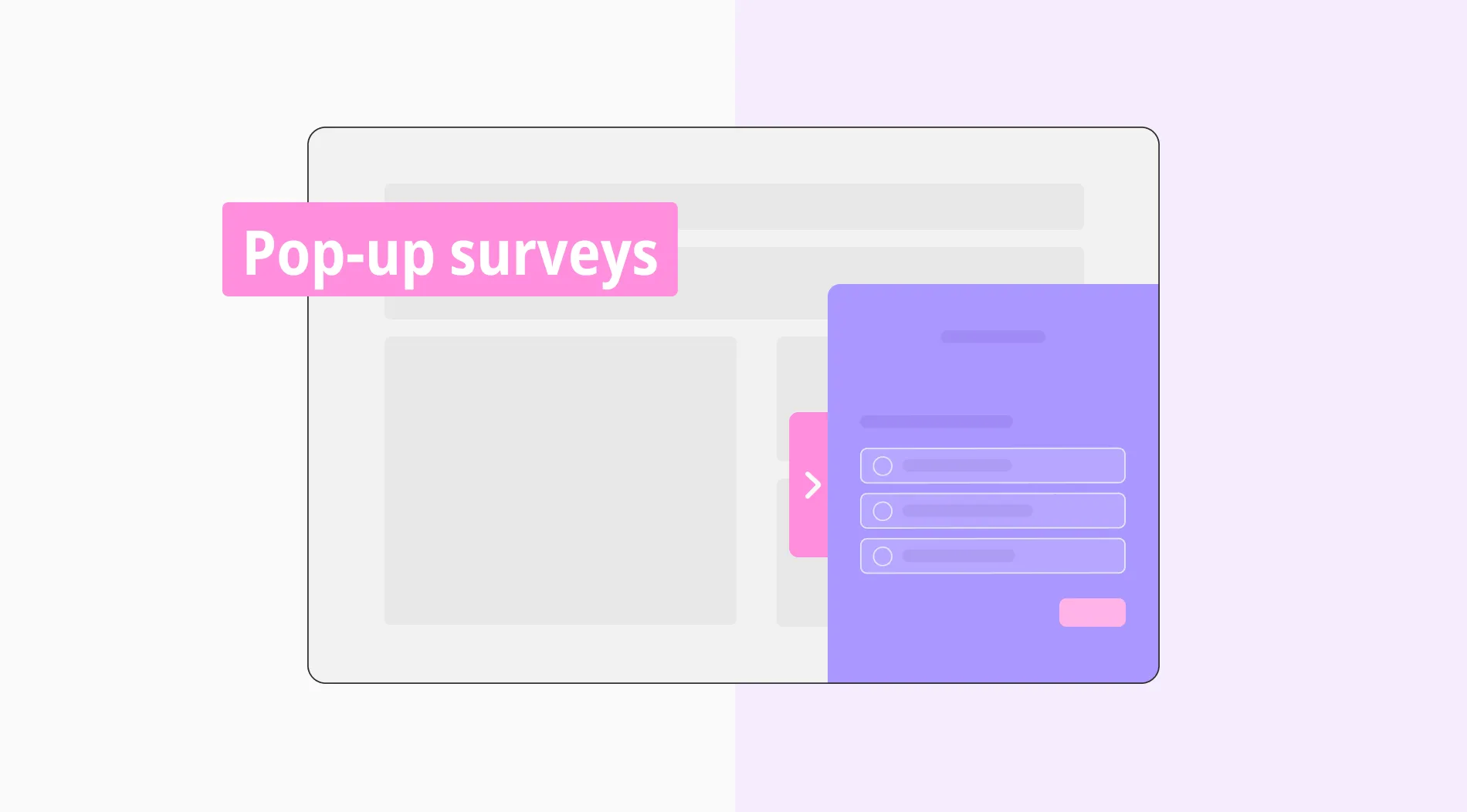Quota sampling is a powerful research technique. As a non-probability test, it depends on the researcher's dependability. A researcher can choose up to two subgroups from the population when gathering data for a study. These two subgroups will provide a generalized picture of the people. The researcher may choose to conduct the study using gender, socio-economical status, or educational attainment.
The process of quota sampling entails taking a sample that is highly tailored and proportionate to a population's characteristics or traits. This article will explain the quota sample definition, what quota sampling is in research, the types of quota sampling, and its advantages and disadvantages.
The basic definition of quota sampling
Quota sampling is a technique where a researcher chooses a sample group to represent particular population characteristics. It is the non-random selection of participants from predetermined population subgroups. When random sampling is impractical, researchers turn to quota sampling because they have more control over the people they choose than they do with convenience sampling or other non-probability techniques.
Researchers specify the subgroups required to accomplish the objectives of their study. A quota sample is used to facilitate comparisons between study groups. Investigators must define these groups to ensure participants fit the requirements for just one group. These terms are classified as strata. Researchers must gain sufficient knowledge for each subject to be placed in the appropriate stratum.

What is quota sampling?
Types of quota sampling
When the desired population is insufficient, quota sampling is frequently used because it provides the most accurate representation possible. Here are two main ways to select samples for your research: proportional sampling and non-proportional sampling.

Quota sampling methods
Proportional sampling
In proportional sampling, the population's key characteristics are captured by selecting samples based on their prevalence in the study population. In surveys and opinion polls where the total population to be surveyed is typically predetermined, proportional sampling is frequently used.
Non-proportional sampling
In contrast, non-proportional sampling is less limiting. The minimum amount of sample units required for each category is specified here. In other words, a non-proportional doesn’t demand that the sample sizes correspond to population proportions.
When to use quota sampling
When a study doesn’t have the time or resources to use random sampling, quota sampling is a valuable substitute. It can be more effective than pure convenience sampling, which accepts any willing subject, even though it is less effective at producing representative samples than random sampling.
Quota sampling is used in quantitative and qualitative research to understand a specific subgroup's characteristics or examine relationships between various subgroups. It enables researchers to interview people who are easy to reach, necessitating a small research budget and allowing for the rapid collection of data.
3 Steps to conduct quote sampling
Unlike other probabilistic sampling methods, which require a set of rules that a researcher must follow before developing samples, quota sampling doesn’t require researchers to adhere to precise standards. You can follow the three steps to conduct quota sampling.

How to conduct quota sampling
1 - Defining the strata
Strata are the subsets of data that have been divided into smaller groups. Identify the strata important to your study and those less critical by using your knowledge of the subject to define them. Generally, you include strata in your quota sample to ensure that you represent all groups or compare the various groups. Your quota sampling objective impacts the strata and quotas.
Example of defining strata: Let’s say you are researching the unemployment rate in your country. Depending on your research goal, you can select people of different gender, age, educational background, or any other variable for stratification.
2 - Determining the quotas
Afterward, calculate the population’s proportions for each stratum. Your quotas are listed here. You can use your discretion in determining how many units you should select from each subgroup.
Example of determining the quotas: For instance, reviewing administrative records is necessary if you want the proportion of departments in the sample to represent the body of the university you are surviving accurately. If the statistics sections make up %20 of the population and you want the total sample size to be 2000 respondents, you must use a quota of 0.20 X 2000= 200 for the statistics sections.
3 - Recruiting
You should collect enough data to place each subject in the proper strata and ask your main interest-related questions. Except for not using all volunteers in the study, recruiting for quota sampling frequently involves the same techniques as convenience sampling. You will begin excluding people as the quotas are reached.
Finally, confirm that the sample accurately represents your audience. The goal is not to find the ideal match because that is impossible. The goal is to obtain a sample that includes the essential traits of each segment.
Quote sampling examples
Quota sampling is one of the most popular techniques for gathering information in surveys and research studies. To decide whether or not this method is the best course of action for your goal. It is crucial to comprehend what it entails, its advantages, and its disadvantages. You can consider these quota sampling examples to understand this sampling method better.
Example 1: An alcohol production factory decides to find the age group that prefers a particular brand of wine to a specific region.
The researcher uses a quota sampling method on the following age group to determine this.
Age groups 20-29, 30-39, 40-49, and over 50 will be examined
The researcher will analyze the implications of the findings, which will give the company insight into the trend of alcohol consumption among the state's population.
Example 2: A researcher wants to find the smartphone most people prefer to buy and use. This researcher wants to study six countries in Europe. The researcher considers a sample size of 3000 participants to conduct this research.
So, let’s look at how the researcher can segregate the population by quotas:
- The researcher can divide the population accordion to the participant’s gender. They will divide the 3000 participants into equal groups of 1500 females and 1500 males.
- The researcher can segment the participants based on socioeconomic status using factors like employment. 2000 employed and 1000 unemployed participants may make up this ratio. The researcher can also separate the unemployed participants using a subset quota.
- The researcher can also divide using the age of the participants. This will be 1000 participants, each representing ages 18-25, 26-36, 37-45, 45-50, and 50 and above.
So, in two examples, a sample size was used to represent the entire population in its actual characteristics rather than the population participating in the survey. The quota system means just that. A sample group is utilized to estimate the whole population’s value.
Advantages and disadvantages of quota sampling
Quota sampling aims to ensure the respondents are well-represented in the final sample. It is typically a reliable method of collecting a sample, but like all sampling techniques, it has advantages and disadvantages:
Advantages of quota sampling:
- Saves time: Quota sampling generally requires less processing time than probabilistic methods. You won't need to compile a complete list of the population or look for sporadic samples that luck offers. Instead, you can use quick methods to locate people in reachable places.
- Simple and easy to understand: It is simpler for a researcher to interpret the data and survey results when quota sampling is used with appropriate research questions.
- Accurate representation of the target population: A quota sample is more likely than other non-probability methods to represent a population accurately. Even the most minor subsets of the population can be represented, and you can be sure. This arrangement of the experiment makes it simpler to investigate particular traits later.
- Saves money: Quota sampling lowers expenses. The expense needed to carry out this sampling strategy is minimal.
Disadvantages of quota sampling:
- Research bias: Quota sampling results in research biases, such as selection bias, because it doesn't use random selection, and the researcher chooses who is included in the sample.
- Information bias: It is possible for inaccuracy because only specific population characteristics are considered when dividing your sample into subgroups. Information bias may also result from this.
Stratified sampling vs. quota sampling: What’s the difference?
Quota sampling and stratified sampling are similar since they both divide a population into groups or strata, but they also have differences. Stratified sampling uses simple random sampling to choose the respondents for each group, whereas quota sampling chooses the respondents for each group using convenience sampling.
Stratified sampling is a probability sampling method, but quota sampling is a nonprobability sampling method. In stratified sampling, each individual has an equal chance of being included in the sample, whereas, in quota sampling, not everyone has an equal opportunity.
Key points to take into account when performing quota sampling
In conclusion, quota sampling is a method in which a researcher chooses a sample group to mirror some particular population traits. The main distinction between quota sampling and other strategies is that participants are not randomly chosen. To conduct the survey and generalize the results to the population, the researcher can choose a sample group with characteristics found in the population.
Quota sampling expedites research because the population it chooses as its sample is representative. Quato-sampling is a handy research tool but is not always the best action. You should know the circumstances in which quota sampling might be most helpful.
Sena is a content writer at forms.app. She likes to read and write articles on different topics. Sena also likes to learn about different cultures and travel. She likes to study and learn different languages. Her specialty is linguistics, surveys, survey questions, and sampling methods.
- The basic definition of quota sampling
- Types of quota sampling
- When to use quota sampling
- 3 Steps to conduct quote sampling
- Quote sampling examples
- Advantages and disadvantages of quota sampling
- Stratified sampling vs. quota sampling: What’s the difference?
- Key points to take into account when performing quota sampling



